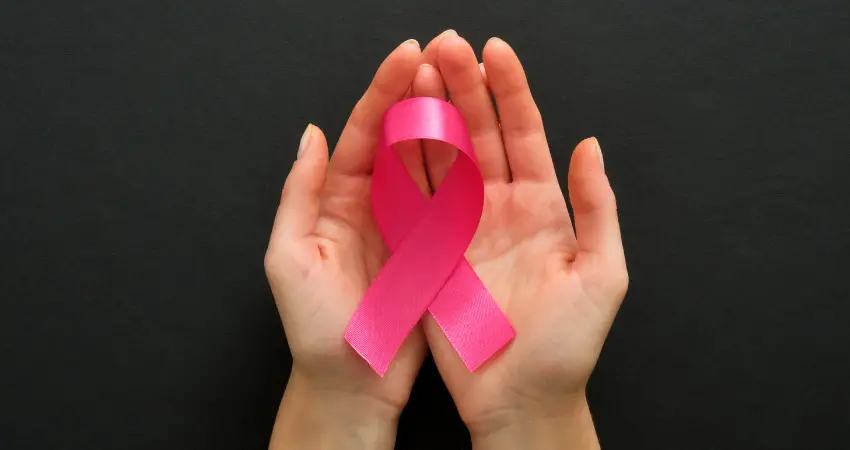This article focuses on a serious issue affecting the Bluegrass State.
Did you know that Kentucky holds the unfortunate title of the state with the highest cases of cancer in the United States?
Shocking, isn’t it? In Kentucky, the cancer rate is at 515 cases per 100,000 people, which is well above the national average.
Why is this so important to know? Because understanding the reasons behind Kentucky’s high cancer rates is the first step in battling this deadly disease.
It’s not just a number; it’s a warning sign. It’s a call to dig deeper, to understand why this is happening, and to find out what can be done to lower these alarming rates.
We owe it to ourselves and our communities to take a closer look at what is going on and how we can make things better.
In the following sections, we’ll delve into the types of cancer that are most common in Kentucky, explore the factors that contribute to these high rates, and discuss what steps are being taken to improve the situation.
We’ll also give you tips on how you can protect yourself and your family. So, let’s get started and break down why Kentucky is the state with the highest cases of cancer.
Kentucky: The State with the Highest Cases of Cancer?
Understanding why Kentucky has the highest cases of cancer is essential for tackling this severe health problem.
There are three main factors that contribute to these high cancer rates: lifestyle choices, environmental pollution, and lack of access to healthcare.
Lifestyle Choices
One of the biggest lifestyle factors is smoking.
Kentucky has a smoking rate that is much higher than the national average. About 24% of adults in the state are smokers.
Smoking is directly linked to lung cancer, which is the most common type of cancer in Kentucky.
Another lifestyle factor is diet.
The typical diet in Kentucky often includes high-fat and low-fiber foods. These kinds of foods can contribute to cancers like colorectal and breast cancer.
Lack of exercise is also a problem. Physical activity is known to lower the risk of certain types of cancers but is often neglected.
Environmental Pollution
Kentucky has a long history of industries like coal mining and manufacturing.
These industries often release harmful toxins into the air, soil, and water. For example, pollutants such as benzene and formaldehyde are known to increase the risk of cancer.
People living near industrial zones are often more exposed to these harmful substances, leading to higher cancer rates in those areas.
Lack of Access to Healthcare
Many places in Kentucky are rural with limited access to healthcare services. This becomes a problem for early detection and treatment of cancer.
Without convenient access to medical facilities, people are less likely to get regular screenings or seek medical help when symptoms appear.
This delay can make treatment less effective and increase the chances of dying from cancer.
The Combined Effect
It’s not just one of these factors but a combination that leads to high cancer rates. Smoking and poor diet, along with environmental exposure and poor healthcare access, create a perfect storm for cancer to thrive.
By understanding these main factors, we are better equipped to address the root causes. Whether it’s pushing for cleaner industries, better healthcare access, or lifestyle changes, knowing is the first step to doing.

Environmental Concerns: The Role of Industry in Kentucky’s High Cancer Rates
In Kentucky, industrial activities such as coal mining play a significant part in environmental pollution.
These operations discharge hazardous substances into both air and water, elevating the likelihood of cancer among residents.
Air Pollution
Factories and mining operations often emit harmful chemicals, including benzene and formaldehyde, into the atmosphere.
These pollutants are known carcinogens, which means they have the potential to cause cancer.
Water Contamination
Likewise, industrial runoff can contaminate local water sources. Chemicals like arsenic and heavy metals find their way into rivers and lakes, posing a health risk for those who rely on these water bodies for drinking or bathing.
Impact on Communities
People residing near these industrial zones face increased exposure to these toxic elements, putting them at higher risk for developing various types of cancer.
By acknowledging the environmental factors contributing to the state’s elevated cancer rates, effective strategies for pollution control and community protection can be developed.

Access to Healthcare in Kentucky: A Barrier to Early Cancer Detection and Treatment
In Kentucky, limited healthcare access plays a significant role in the state’s high cancer rates.
Rural Areas Face Challenges
Many residents live in rural locations far from medical facilities. The distance makes it difficult for these individuals to undergo regular cancer screenings or quickly seek medical attention when symptoms arise.
Consequences of Delayed Care
Late diagnosis often leads to reduced treatment options and lower survival rates. Immediate care and early detection are crucial for successful cancer treatment, but inaccessibility to healthcare hampers these efforts.
Community Health Impact
The lack of nearby healthcare services not only affects individual patients but also puts entire communities at risk.
When cancer isn’t detected early, it can spread, making the situation more dire for everyone involved.
By understanding the limitations in healthcare access, particularly in rural parts of Kentucky, we can begin to address this critical issue that significantly contributes to the state’s high cancer incidence.
In summary, limited healthcare availability hinders early cancer detection and timely treatment, affecting both individual and community health.
Addressing this problem is essential for reducing cancer rates in Kentucky.

Steps Being Taken to Lower Cancer Rates in Kentucky
Reducing cancer rates in Kentucky is a high priority, and various efforts are underway to address the issue.
These efforts come from different sectors including government bodies, non-governmental organizations (NGOs), and local communities.
Government Initiatives
- Smoking Bans: Kentucky has started implementing smoking bans in public places to reduce exposure to secondhand smoke, a known carcinogen.
- Cancer Screenings: Government health programs now offer free or low-cost cancer screenings in both urban and rural areas to catch the disease in its early stages.
- Public Awareness Campaigns: The state government runs ads and educational programs aimed at promoting healthy lifestyles, such as the importance of a balanced diet and regular exercise.
- Medical Grants: Funds are being allocated to rural hospitals to improve medical services, including cancer care.
Non-Governmental Organizations (NGO) Efforts
- Educational Workshops: NGOs often conduct workshops to educate people about the risks of certain lifestyle choices like smoking and poor diet.
- Clean Water Programs: Some NGOs are working to provide cleaner water sources in industrial areas to reduce exposure to harmful chemicals.
- Advocacy: These organizations also lobby for stricter industrial regulations to limit the release of toxins into the environment.

Related Articles
Mississippi Health Disparities
Local Community Actions
- Health Fairs: Local communities sometimes organize health fairs that offer free screenings and educational materials about cancer.
- Community Gardens: To encourage a healthier diet, communities are establishing gardens where residents can grow fruits and vegetables.
- Local Fundraising: Communities often engage in fundraising activities to support local hospitals and provide better cancer care services.
By actively participating in these programs and adopting healthier lifestyle choices, residents can contribute to lowering cancer rates in Kentucky.
How You Can Protect Yourself: Simple Steps to Lower Your Cancer Risk in Kentucky
Given the high cancer rates in Kentucky, taking proactive steps for prevention is more important than ever.
Here are some straightforward ways you can protect yourself and potentially lower your risk of developing cancer.
Stop Smoking or Never Start
Smoking is a leading cause of lung cancer and contributes to many other types of cancer as well.
If you’re a smoker, quitting is the single most effective step you can take. If you’ve never smoked, that’s great—keep it that way.
There are many resources available, both online and offline, to help you quit if you’re a smoker.
Eat a Balanced Diet
What you eat has a significant impact on your health.
Aim for a balanced diet rich in fruits, vegetables, and whole grains. These foods contain essential nutrients and antioxidants that can help fight off cancer cells.
Limiting processed foods and red meat can also make a difference.
Regular Exercise
Physical activity is another crucial aspect of a healthy lifestyle. Aim for at least 150 minutes of moderate exercise per week.
Exercise helps in maintaining a healthy weight, and it’s proven that being overweight increases the risk of certain types of cancer.
Whether it’s a brisk walk, jogging, or even gardening, any form of physical activity is better than none.

Go for Regular Check-ups
Early detection is vital in the fight against cancer. Regular medical check-ups and screenings can catch cancer in its initial stages when it’s easier to treat. Follow your doctor’s recommendations for screenings like mammograms, Pap tests, and colonoscopies.
Kentucky: The State with the Highest Cases of Cancer
You don’t have to make huge life changes to see a significant impact on your cancer risk. Simple steps, consistently applied, can make a world of difference. By quitting smoking, eating well, staying active, and going for regular check-ups, you’re putting yourself on a path to a healthier life.
Conclusion
Conclusion: Taking Action for a Healthier Kentucky
Understanding why Kentucky has the highest cases of cancer is more than just knowing alarming statistics.
It’s about identifying the real issues that people face every day—be it lifestyle choices, environmental pollution, or healthcare access.
Various efforts from the government, NGOs, and local communities are aimed at reversing this trend. Yet, the fight against cancer also begins at an individual level.
Simple steps like quitting smoking, eating a balanced diet, exercising regularly, and going for regular check-ups can make a significant difference.
These actions not only protect you but also contribute to a collective effort to lower the high cancer rates in Kentucky.
Sources
https://www.cdc.gov/nchs/pressroom/states/kentucky/kentucky.htm


